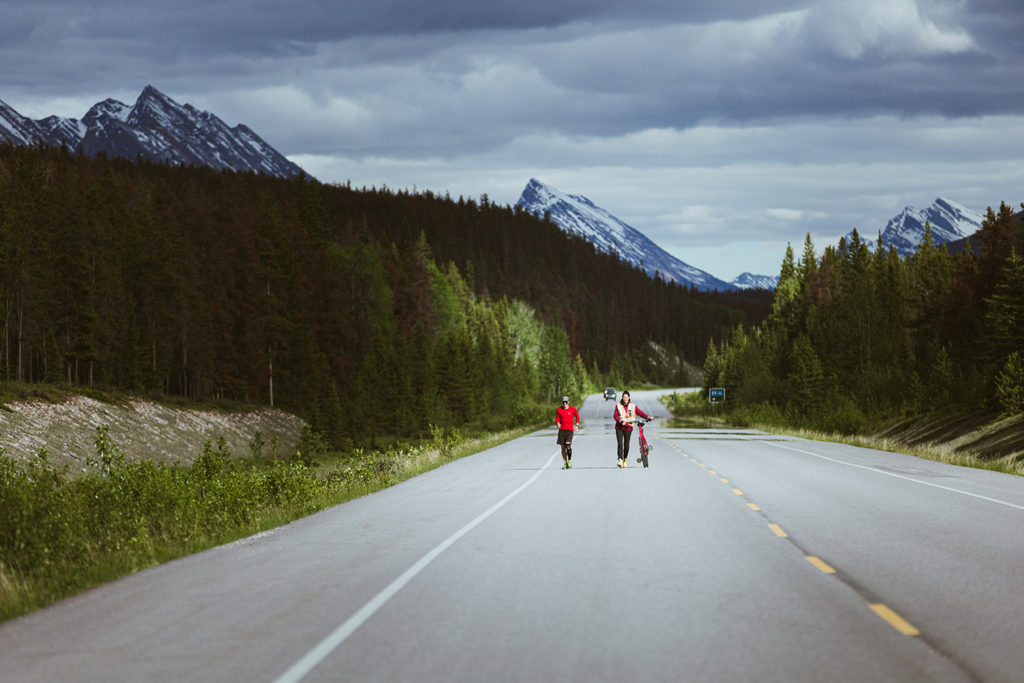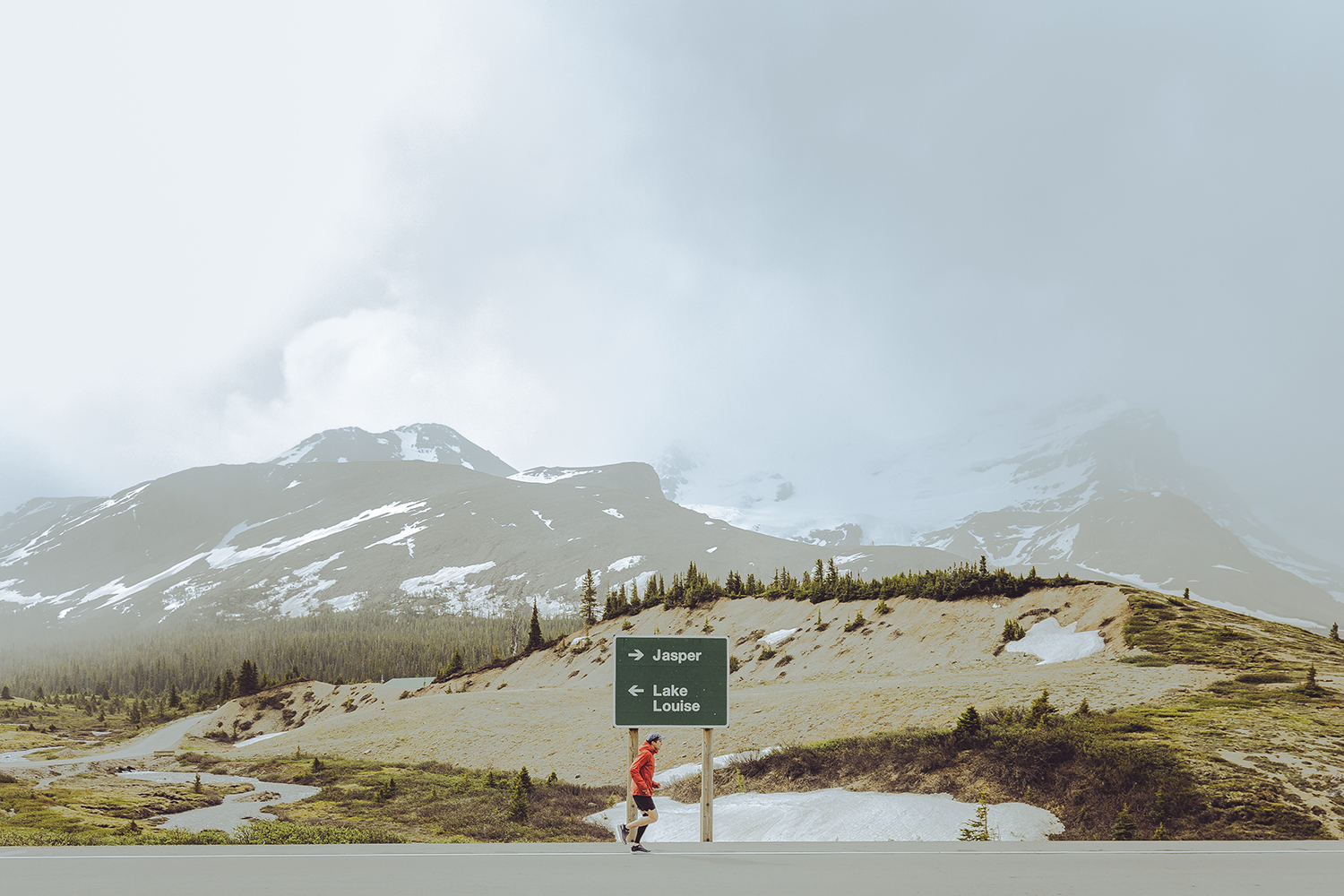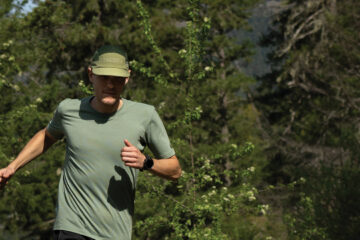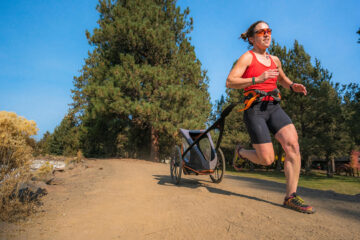words: dan marrett
runner: sam dickie
photos: nic groulx
june sixteenth
He’s lying on the ground, motionless. He collapsed right after the finish line; which means he made it, he hit his goal. Proof that his body could travel the distance. On top of that he raised six thousand dollars against a goal of five, supporting a local youth mental health charity.
He missed the time he was chasing, but given the circumstances, it hardly takes away from the accomplishment. It would be a gruelling run on a good day, and Sam was in pain before his first step.
If his support crew wasn’t surrounding him, the scene would look grim. He’s shattered. Feet exploded. Muscles cooked. Brain fried. The last drops of extra liquid in his body slide out as tears down his salty cheeks, dripping onto the cold pavement cradling his face. One body length behind him and a few meters to the right, a sign mockingly looks down at him: “Welcome to Jasper. Wonderful. Formidable.” He’s pinned the yellow caution tape that served as a finish line for the 230km to the ground beneath him, flapping in the night breeze.
Technically whole but lying in pieces.
It would be days before he could walk again, and weeks before he could put one leg in front of the other at any pace.
In spite of that, if you put yourself on the shoulder of the highway next to him and asked “would you do it again?” His eyes wouldn’t open, he’d still be gasping for breath, but he’d find a way to say “no… I would do something longer.” Hidden by darkness, a smile would crack at the side of his mouth.
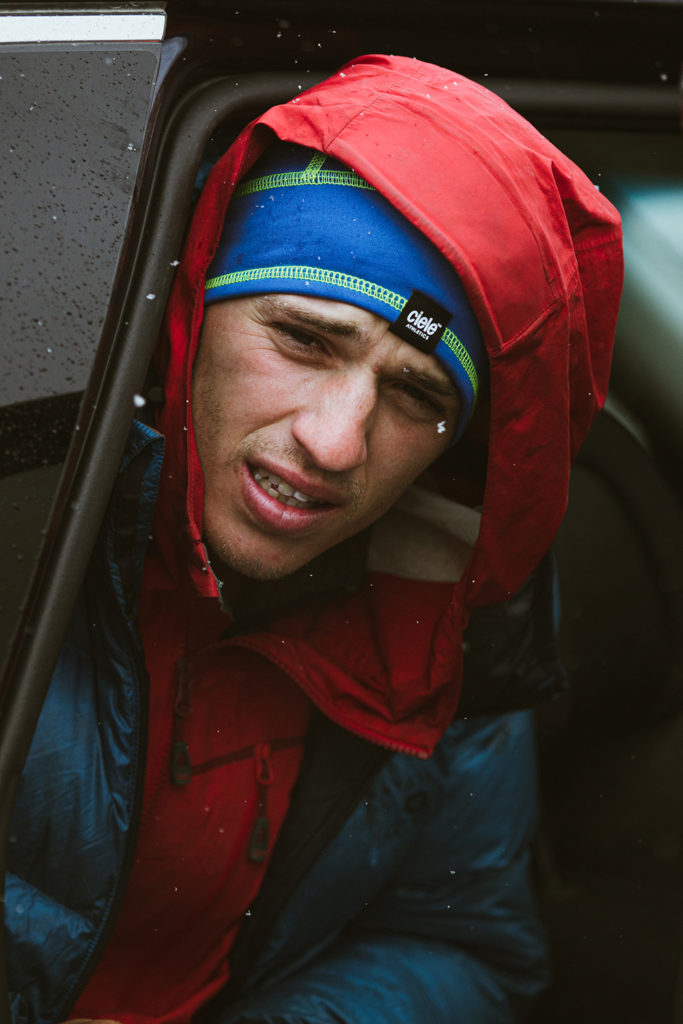
june fourteenth
It’s the middle of the night, 1am on race day. Nerves and anxiety are kicking in, but more importantly, his knee is signalling danger. Towards the end of his training program he knew he had outrun the life of his shoes, but he kept running in them. A few days ago, he felt a click in his knee. The pain wasn’t prominent, but it was there. Less than 24 hours before he was setting out on the longest run of his life, it was an ominous sensation.
To test things out, Sam went for a run. It wasn’t long before he realized his knee was going to be a real issue. He’d deal with it later. Back to bed. When he woke up in the morning – it was throbbing. It was race day, and his body was already failing him. He started to question the whole thing.
His fiancé got his cousin, a voice of reason for Sam, on the line. “You gotta do this. People are looking up to you right now. They need inspiration, and right now, this is it. There’s a lot more weight on you than you know. Throw away your time, get to the finish line.” It’s tough love but love none the same. Enough to motivate him to get out of bed, and tackle the run, even if he has to fold on the idea of a goal pace.
0 km
It’s minutes before 6pm. He’s in place, ready to go but in pain, his knee in a brace. The support crew – a handful of friends who needed little coercing – are there with vehicles, bikes, and a mobile aid station that will shuffle ahead 10km at a time.
What lies ahead of him is one of the most scenic stretches of highway in Canada. 230km from Banff to Jasper. Had he been feeling perfect that morning, he would have wanted to complete it in 29 hours, or 6:30 per km.
His crew sounds off a horn, and Sam sets off with one foot in front of the other. Six and a half minutes later – he’s 1 km down, 229 to go.
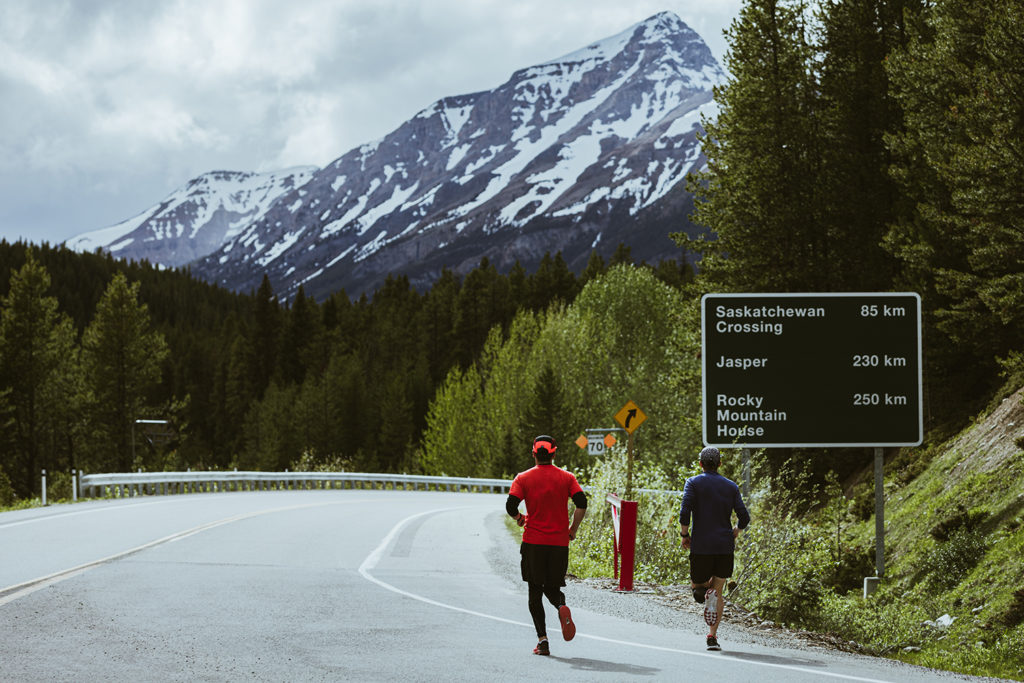
50 km
Everything is going to the original plan: he’s on pace and able to hold conversations with his rotating support crew. They spot bears in the woods and stop to take pictures, they share stories; the mood is positive.
100 km
The pain in his knee is manageable, and his strides are strong. There’s no wind, no cars for hours, and Louis Armstrong blasting from a speaker on his support vehicle reverberates through the valley. Looking back on it after finishing, this is the highlight of the run.
From that point on, the world around Sam starts to erode. His support crew starts playing a more active role, staying close to him and pinching his shirt to keep him from falling down. He runs on, without dialogue, disconnecting from the effort his body is going through.
While he was on target for his original time goal, he starts to slip. More breaks, longer breaks, and more sluggish at every aid station before getting back to the run. He jumps on the opportunity to ice his feet/ankle in any ice-cold stream within eyesight of the highway.
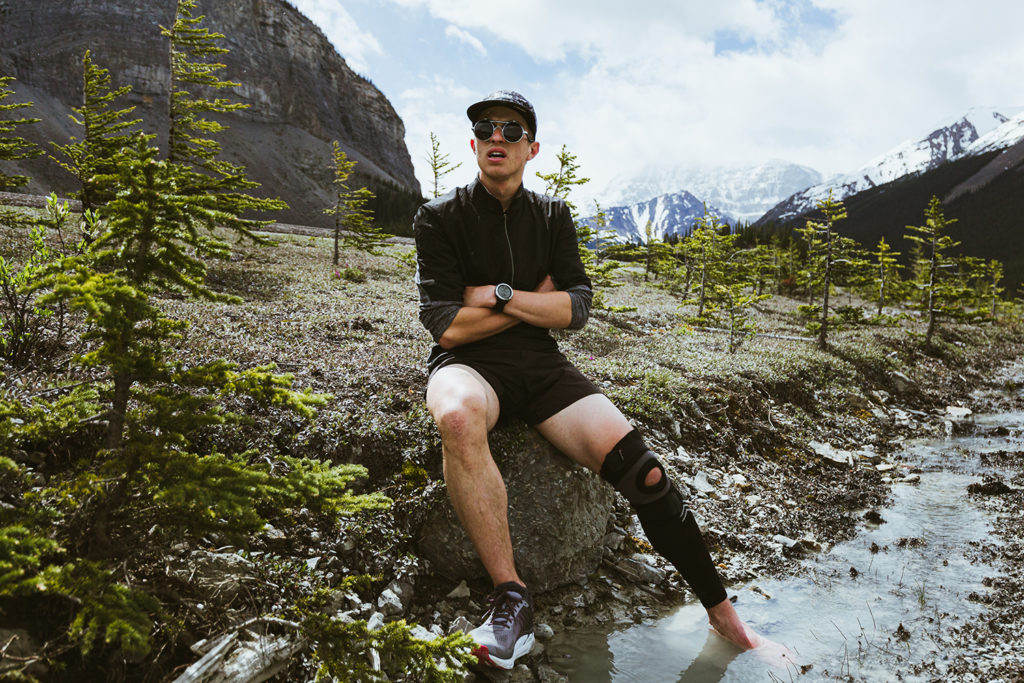
170 km
Running towards the Columbia Icefield Discovery Centre, the wind whips at him for a solid 15km, while he climbs to an elevation of 2000m. The wind didn’t seem to deter him enough, so mother nature added snow in the mix. The snowflakes get picked up by the gusts and snap him in the face.
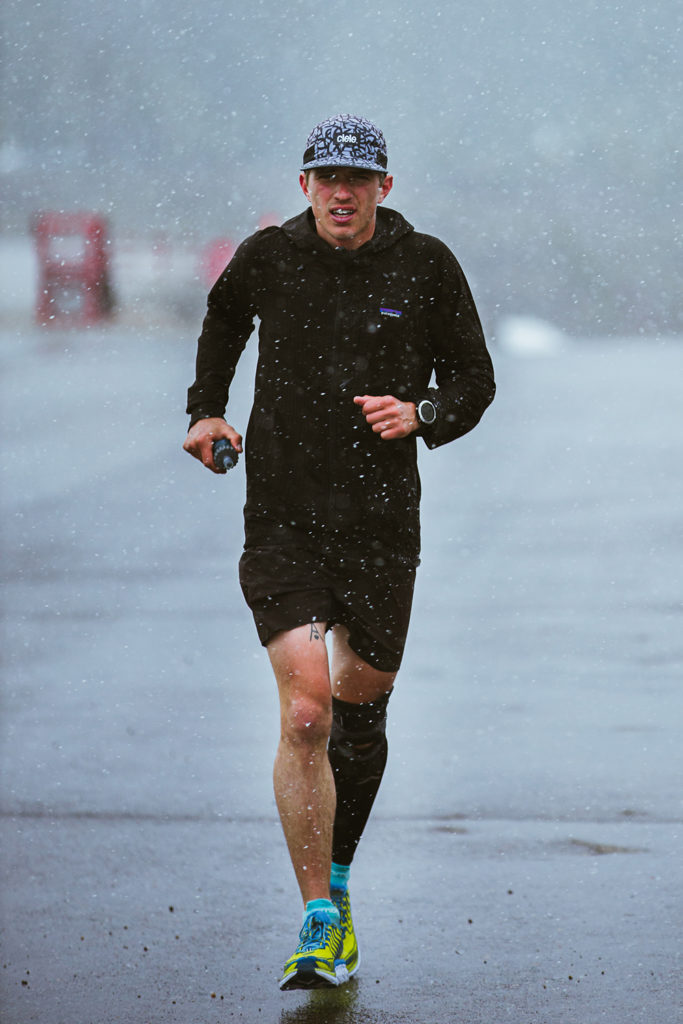
190 km
For any race, regardless of distance, he hits a wall at the three-quarter mark. Here, he has sunk to his absolute lowest. Even his support crew is exhausted, struggling to find the energy they needed to finish, let alone support and motivate Sam. He’s slept a measly 7 minutes since he left Banff, when he dozed off during a compression boot recovery session.
There are layers of blisters on his feet – the surface of them rubbed away into the insoles of his shoes.
“The pain took over.”
It was wearing down on him, he was getting frustrated with how the run was going, how slow his pace was. It was a code red situation. The crew managed to get his cousin on the line again, 2am local time for him in Ontario.
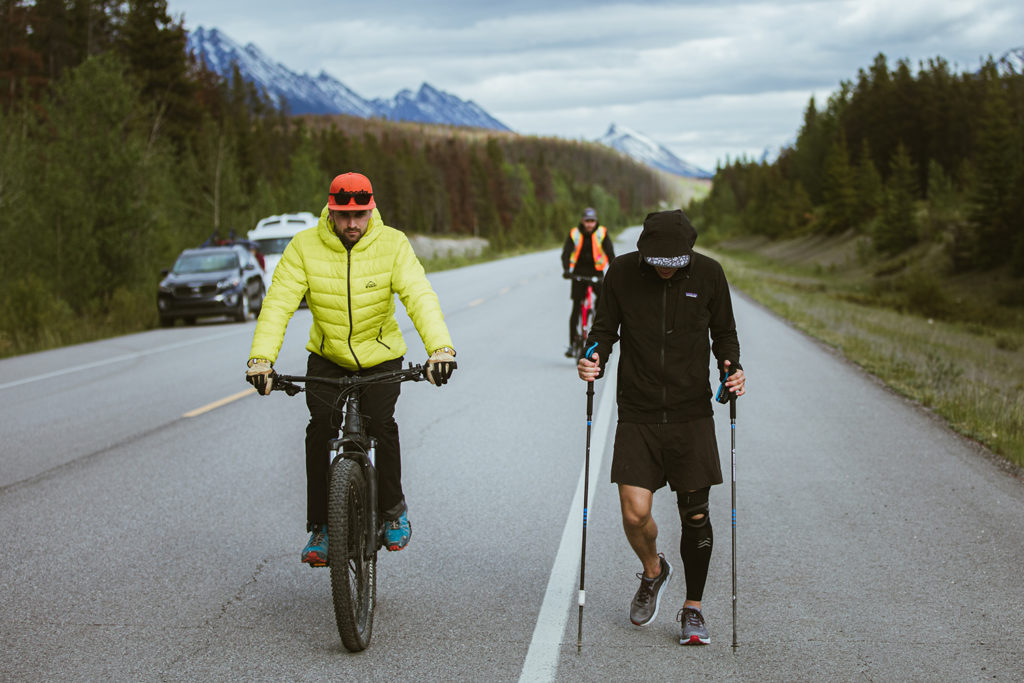
Sam can’t remember exactly what Jeremy said. The words weren’t pretty but the intent of the message was positive. The gist of it, adjusted to be polite, was “pull it together. You won’t be happy with yourself if you finish like this. Get your head out of this spot.”
Sure enough, he rallied. The motivational seed took root in Sam’s mind, energizing as it spread through his aching body. Not only did he start running, but he picked up the pace. Under the night stars covering the last marathon towards Jasper, Sam had a feeling that this would end ok.
As his pace quickened, the shoulder of the road narrowed while entering a tunnel. For twenty minutes, he listened to the sound of his footsteps bouncing off the concrete walls, echoing both miles ahead and miles behind him, and watching the evenly spaced fluorescent lights pass by above him.
220 km
A jolt of pain in the back of his knee knocks him out of the monotony of his movement and surroundings. His body continues to move forward, but his brain pulls back. He’s able to focus on the world around him.
“I’m not in a tunnel.”
He realizes that the mountains had formed an arched silhouette, with stars filling the area between them, convincing him he was underground. How had he not remembered earlier that there was no tunnel between Banff and Jasper? His brain managed to deceive him for half an hour. He was hallucinating, and went on to experience a few black-outs.
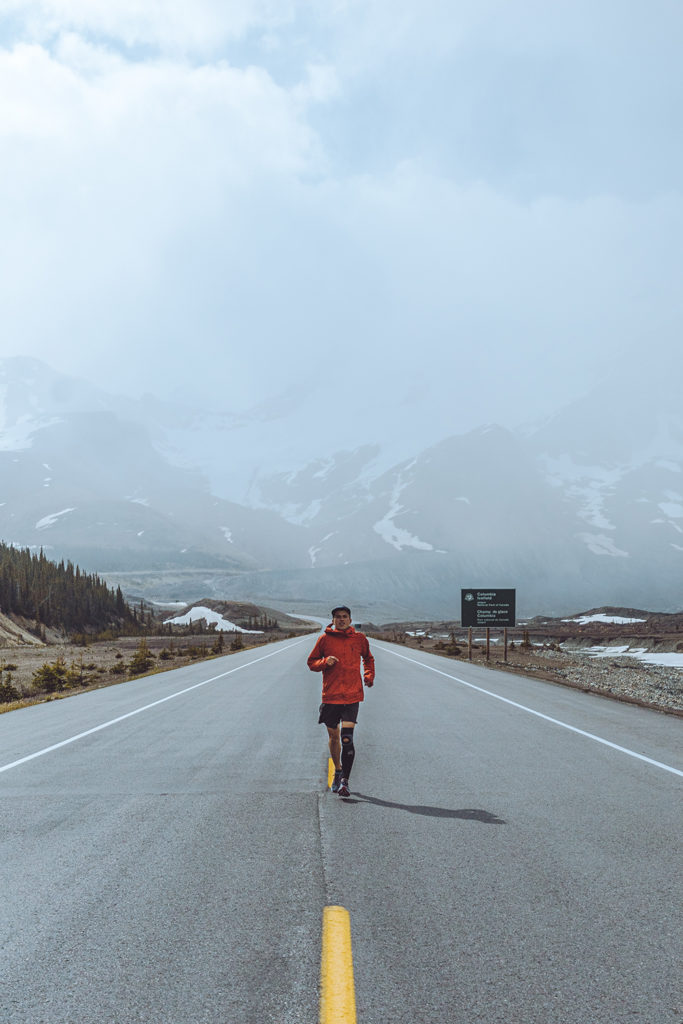
His body entered a state that he didn’t know existed. Progressively, non-essential functions shut down to allow his body to reallocate every last bit of energy towards propelling him forward. He lost hearing, he lost 90% of his vision, and he no longer felt any pain. Sam’s system provided fuel to areas essential to get to the line, to movement. Everything else dimmed. He found a flow, his legs working harder and smoother than he could have anticipated. He tossed his hiking poles to the side, and picked it up to a proper run pace for 10km.
Finally, the end is in site. He continues to drive the pace quicker, and lays it out at sub 5-minute kms until he’s across the line, collapsing barely within the city limits of Jasper.
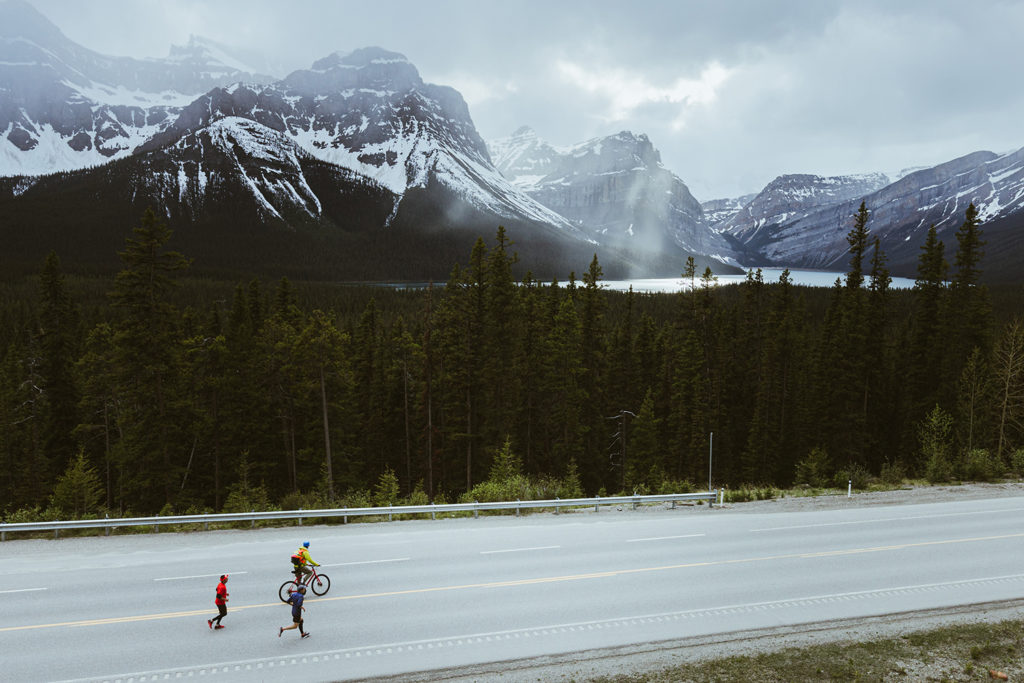
april first
Research on locations is fully underway. He dug into the West Coast Trail in BC, but Parks Canada closed it for the season. He would need to find something even more local, that he could run from his front door. While searching for the answer, he ran a marathon on the Icefields parkway, and the idea spurred to run from Banff to Jasper. Serendipitously, the distance was very close to the FKT he was chasing. This could be a chance to prove to himself that he, and his body, could cover that amount of ground.
Based on everything he went through a month before, he decided to connect with a local youth mental health charity, jack.org. He wanted to help create awareness and raise funds for people who, like himself, were going through a challenging and stressful period of their life. It was a charity that hit close to home.
march fifteenth
It’s two days before his slated departure to Asia to tackle a 230 km trail run; a solid eight months of training in the bag. Travel bans kick into effect. The trip, and his FKT attempt, are over before they started.
Committing months of his life towards a goal that he was within 48 hours of setting out to attempt, it was understandably hard to accept. He lost motivation and drive, but the setbacks didn’t end there. Sam had three part time jobs and lost them all to covid-related reasons. His fiancé lost her job. The sky was falling, falling fast and hard. Depression set in as he struggled to find his way amongst wave after wave of bad news.
Two weeks into it though, he hit a turning point. “I put my shoes back on, and started running. I need a goal.”
He needed to find something to pursue, an objective that could replace the initial plan. Something that would challenge him, physically and mentally. Something that would allow him to know that he could have accomplished the original goal. The biggest barrier was that he wasn’t going to be able to leave the country. He needed to find something close to home.
